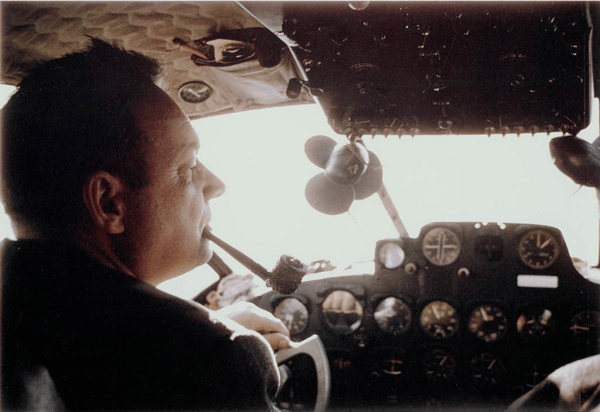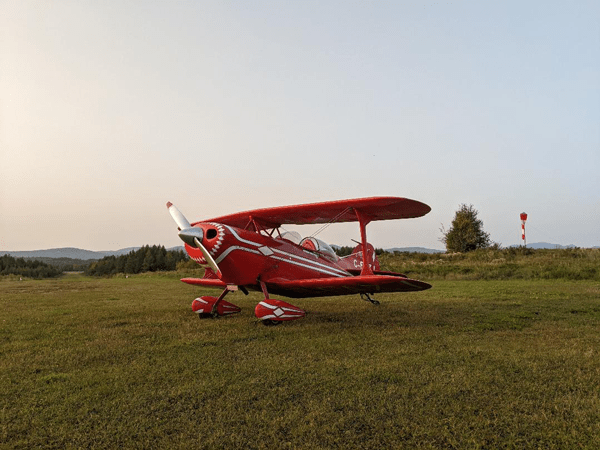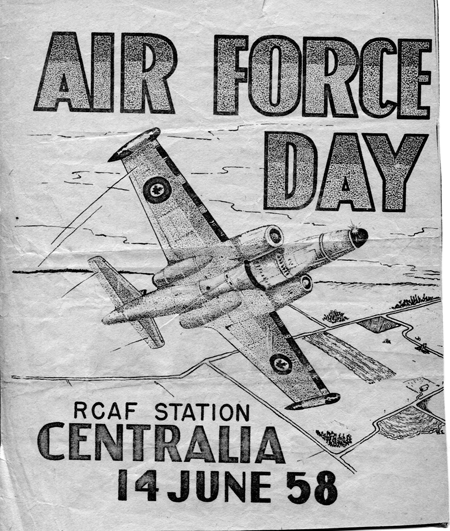
By Marilyn Bruinsma, EAA 87176; Goderich, Ontario, Flying Farmers
The Legacy of Goderich’s Keith Hopkinson – Canada’s Father of Homebuilt Aircraft
Late on Thursday, March 26, 1964, an outstanding pioneer of aviation, Keith ‘Hoppy’ Hopkinson, died while on final to Sky Harbour Airport. That day he had left the United States, a feat much easier then than now, cleared customs in London, Ontario, and was flying home. In a heavy snowstorm, his son, John, was guiding his dad into the airport by radio when contact was lost shortly after 8 p.m. The twin Beech crashed in a farm field east of runway 10-28. Hoppy had radioed earlier that he could see the lights of Goderich.

Robert ‘Gus’ Chisholm planned a grand funeral for his best friend at Hopkinson’s own Sky Harbour hangar. It was the largest funeral Goderich had ever seen. Many friends flew into Sky Harbour on March 30. More than 1,000 people attended and almost 100 aircraft were parked at the airport that day. In his eulogy, Gus told the audience that because he was such a versatile individual, Hopkinson meant much to many, whether in the aviation world or just in plain everyday happenings. As a businessman, Hopkinson believed “if you gave a man his money’s worth, he will always come back.” This was proven by the popularity of his airport and the extensive use of his facilities by all of his Canadian and American friends.
Hoppy was considered the father of the Canadian homebuilt movement. He was never too busy to halt his project and talk to any individual wanting advice. He was a dreamer, but because of his patience, foresight, and maturity, he could make his dreams happen. His dreams were goals and once he began a project, Hoppy worked with enthusiastic dedication until it was completed. Sundays he often drove around his airport dreaming of ideas to improve his facilities like a swimming pool for children and picnic tables for families. He wanted to acquire warbirds for display in his hangar to remind visitors of the brave young men who sacrificed their lives flying for their country’s service and the terrible cost of war.

Any excuse to sit and hangar talk with visitors in the pilot’s lounge was good enough for him. Hospitality was his asset, and he could make a stranger immediately feel at ease. Sunday mornings were special as Hoppy’s friends would gather in his office. My sister-in-law’s dad, Clyde Everett, was a frequent visitor to Sky Harbour. She said her dad and brothers were allowed in the office, but much younger Sally was not, so she pestered Polly the Parrot, the hangar queen.
While all this was happening, Hopkinson operated the Sky Harbour Air Service from his airport hangar. His air business activities ranged from delivering goods and ferrying surplus aircraft, flight school operations, chartering passenger services, and also an air ambulance. One story is told where Hoppy dropped life-saving insulin to a Goderich tug stranded out in Lake Huron’s ice. There were other somewhat ‘necessities’ dropped to these men.
He was the chief flight school instructor at Sky Harbour. Summer students who worked for his businesses were given free flying lessons on weekends. What a fantastic opportunity to take to the sky while employed at the airport. Many students did this and went on to careers in aviation.
He never treated his employees as ‘hired help’ but personal friends, and they treated him the same. Late in the evening he could be found eating a hot dog with an employee who lived in the hangar’s bachelor apartment. Sometimes he would be out back talking to an apprentice to plan his future career path.
But it would be a monthly issue of Mechanix Illustrated that would propel Hoppy into Canada’s history of aviation. The magazine featured plans for a ‘do-it-yourself’ homebuilt aircraft based on the popular Stits Playboy design. Working with Paul Poberezny of EAA, Hopkinson convinced the Canadian government to allow him to build an airplane from plans. From 1953 to 1955, the workshop behind the family home on Nelson Street was the centre of activity as parts for this homebuilt were made and assembled. Alongside Hoppy and Gus were several other local builders who spent many hours there.
Hoppy’s wife, Isabelle, remembers Dr. Wallace’s wife, Dorothy, stitching the wing covers. More than 1,200 hours later, the finished aircraft rolled out to Sky Harbour ready for its first flight. Receiving DOT flight permit 001, he flew the maiden flight on October 1, 1955. Hopkinson’s small airplane was nicknamed Little Hokey after oldest daughter, Anne. It was the first registered homebuilt in Canada’s history. A wingspan under 23 feet, weighing 850 pounds, it flew at 125 mph with a range of 500 miles. It was an affordable dream for the average family. Burning just 5 gallons of fuel hourly, it was as cost efficient as a car. It may not have been the sleekest, fastest, or biggest aircraft, but it did represent the aspirations of those who dreamed of a day when the freedom of the open skies would be known to all.
As the Playboy underwent its maiden flight, Chisholm was assembling a Baby Ace, another Mechanix Illustrated design, in his South Street home which he fondly called Bits and Pieces, as it was constructed from parts of assorted aircraft. Yes, this is the origin of the name of our newsletter – Ed.
Hopkinson was at the controls when Bits and Pieces made its test flight before a large crowd at Sky Harbour Airport. These two best friends travelled to air shows all over North America in their prized projects. Hoppy received many accolades and awards. Some airports would pay for lunch and fuel if they allowed people to view these homebuilt wonders. Air travel had interested the general public, and homebuilts bolstered that dream. Inexpensive air travel had landed, and private aircraft owners had taken wing. Today, homebuilding is a vibrant part of aviation that owes its work and popularity to Keith Hopkinson, a true trailblazer whose organizational skills, enthusiasm, leadership, and hands-on approach represents an unparalleled legacy to Canadian aviation.
Always willing to spread his expertise and time, Hopkinson served on several boards. With EAA’s president, Paul Poberezny, he worked with others to expand the aviation and homebuilders’ world. In 1952, the Canadian Owners and Pilots Association (COPA) was formed, and he became a founding director. He received COPA’s silver tray award given “to a person who contributed the most in the achievement of private flying in Canada.” Keith with Gus founded the Ultralight Aircraft Association of Canada. He also was bestowed several awards by EAA and other aviation organizations.
Unfortunately for one who spent so much of his aviation career promoting safety, Hopkinson was killed while on final to his home airport in a snowstorm. Little Hokey sits in Ottawa’s Aviation and Space Museum.
Keith ‘Hoppy’ Hopkinson was inducted into the Canadian Aviation Hall of Fame on September 14, 2023, in Calgary for “his contribution to civil, military and commercial aviation, most notably for his development of homebuilding of aircraft and for his development and leadership establishing and supporting organizations and associations. He was the finest Canadian ambassador for general aviation and homebuilt aircraft that ever lived!” So very true.
Material from the archives of the late Robert ‘Gus’ Chisholm
Post Comments



